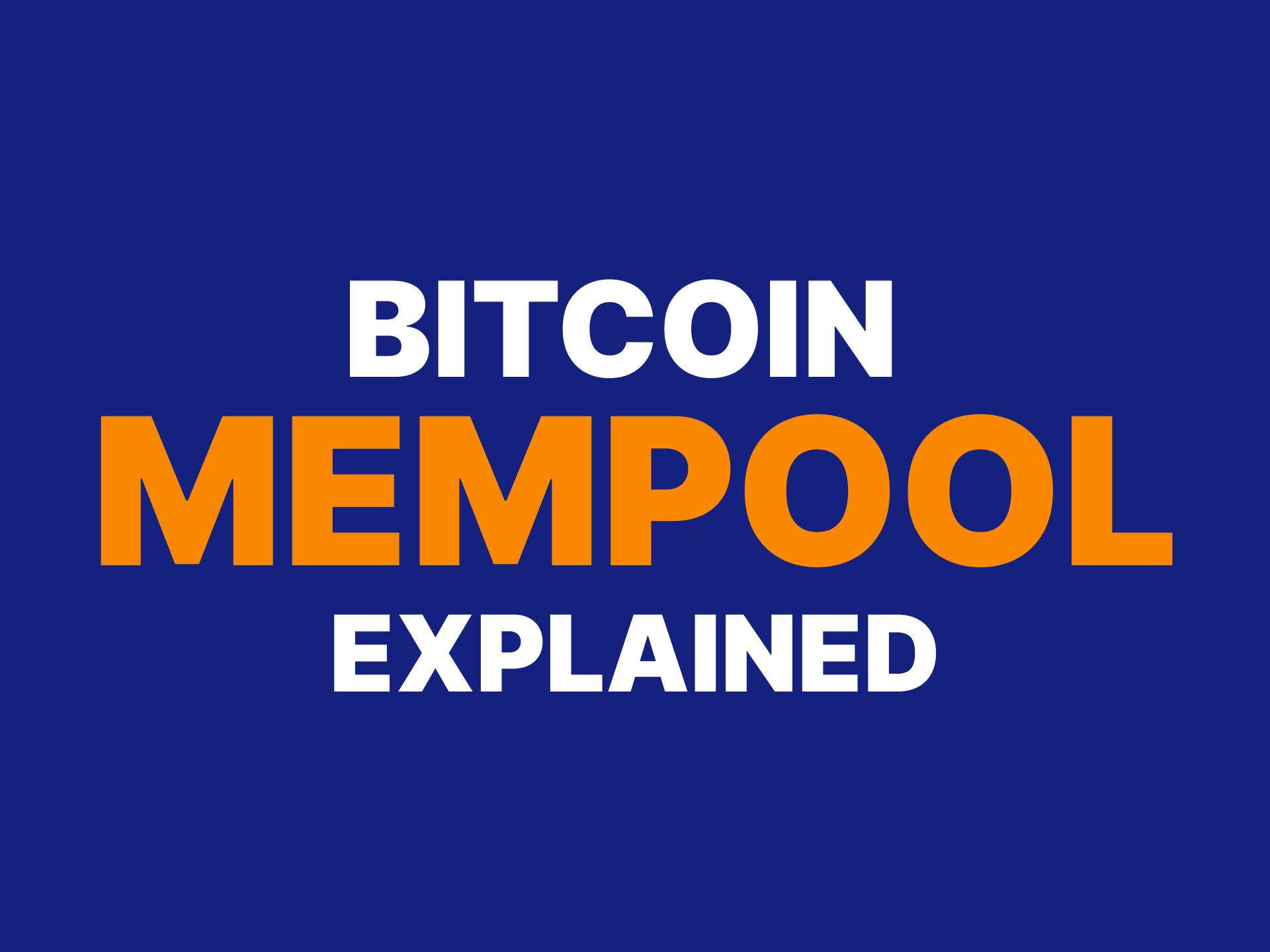For those invest in Bitcoin, whether beginners or seasoned traders, grasping the concept of the Bitcoin mempool is as vital as understanding UTXOs. This blog post aims to demystify the Bitcoin mempool, explore its influence on transaction speed, and transaction fees, and explain what a full mempool means for Bitcoin users.
What is the Bitcoin Mempool?
The Bitcoin mempool, short for memory pool, is essentially a waiting area for all unconfirmed Bitcoin transactions. Think of it as a virtual queue where all the transactions wait to be picked up and included in the blockchain. Every time someone initiates a Bitcoin transaction, it first lands in the mempool. Here, it awaits confirmation by Bitcoin miners, who select these transactions, verify them, and include them in a new block.
Visualize the mempool as a large pool of water, with transactions being streams flowing into it. The pool size represents the mempool’s capacity, while the streams are the ongoing transactions. Like a real pool, the mempool can handle only so much volume before it starts overflowing.
Before we take a closer look at how the Bitcoin Mempool affects your daily life as a Bitcoin user, it’s important to understand how Bitcoin transaction fees work.
How Do Bitcoin Transaction Fees Work?
One key element to understand with Bitcoin transaction fees is that no central authority is setting them. Instead, they are determined purely by market dynamics of supply (space in a block) and demand (number of transactions).
When you make a Bitcoin transaction, you include a fee that goes to the miners as an incentive to include your transaction in the next block. The higher you set this fee, the more attractive your transaction is to miners, potentially leading to quicker confirmations.
Imagine a bidding war at an auction where the highest bidder wins. In the case of Bitcoin, the ‘prize’ is a spot in the next block.
How Does the Mempool Affect Bitcoin Transactions?
Here is where the Bitcoin mempool comes back into play: During high demand (a full mempool), the ‘bidding’ can become more competitive, leading to higher transaction fees. Conversely, lower fees might be sufficient when the network is less congested. This system ensures that the finite space in each block is allocated efficiently, prioritizing those willing to pay more for faster confirmation. By understanding and strategically adjusting the fees you’re willing to pay, you can better navigate the Bitcoin network, balancing cost with the urgency of your transactions.
To summarize: The state of the mempool directly impacts transaction speeds and fees. During high transaction activity, the mempool can become crowded, leading to a backlog. This congestion can result in slower transaction confirmations and higher fees. Miners prioritize transactions with higher fees; thus, when the mempool is full, users often have to pay more to confirm their transactions quickly.
This situation is similar to a busy highway during rush hour. The more cars (transactions) there are, the slower the traffic moves. If you’re in a hurry (want a quick transaction confirmation), you might have to take a faster, but more expensive, route (pay higher transaction fees).
Strategies to Mitigate a Full Mempool and High Fees
A full mempool can be a concern for Bitcoin users. It signifies a network under heavy load, leading to delays and higher transaction costs. For you as a Relai user, this could mean adjusting transaction fees or waiting longer for confirmations.
A full mempool may require strategic thinking. Should you pay a higher fee for faster confirmation, or can your transaction wait? This decision is crucial, especially for those who transact frequently or in large volumes.
When faced with a full mempool and rising transaction fees, you can adopt several strategies to mitigate these challenges.
- Timing is key. If your transaction isn’t urgent, consider waiting for a period of lower activity when the mempool is less full. This approach can lead to lower fees and faster confirmations. Think of it like avoiding rush hour traffic by traveling during off-peak hours. Tools and websites that monitor the mempool can help you identify the best times to transact.
- Use a wallet that allows for fee customization. This feature lets you adjust the fee based on your urgency and the current state of the mempool. It’s akin to choosing between standard and express shipping based on how quickly you need a package.
- Batching multiple transactions into one can also be cost-effective. By combining several transfers into a single transaction, you reduce the overall space you occupy in a block, thus potentially lowering your total fees.
- Consider using Segregated Witness (SegWit) addresses, which can reduce the size of your transaction, leading to lower fees. Consider SegWit as a more efficient packing method, allowing more transactions to fit within a block.
By employing these strategies, Bitcoin users can navigate the fluctuating conditions of the Bitcoin network more effectively, optimizing their transactions for both speed and cost.
Conclusion
Understanding the Bitcoin mempool is crucial for anyone engaged in Bitcoin transactions. It’s not just a technicality but a core aspect of Bitcoin’s operation. A full or busy mempool can affect your transaction times and costs, making it essential to be aware of its current state.
By keeping an eye on the mempool and adjusting your transaction strategies accordingly, you can save on fees and time, ensuring a smoother Bitcoin experience.
FAQs
What happens to transactions in the mempool?
Transactions in the mempool are in a queue awaiting confirmation. Miners select transactions from the mempool to confirm and include in new blocks. The time a transaction spends in the mempool depends on its fee and the overall network congestion.
Can I influence how quickly my transaction leaves the mempool?
Yes, you can. Miners typically prioritize transactions with higher fees for quicker confirmation. By adjusting the fee you’re willing to pay, you can influence how quickly your transaction is processed, especially during high network activity.
How can I check the status of the Bitcoin mempool?
The status of the Bitcoin mempool can be monitored through various online tools and websites. These platforms provide real-time information on the size of the mempool, average transaction fees, and estimated confirmation times, helping you make informed decisions about when and how to transact.
What happens if the mempool is full?
When the mempool is full, there’s a high volume of unconfirmed transactions waiting to be included in the blockchain. This situation often leads to longer wait times for transaction confirmations and higher fees, as users compete to get their transactions confirmed by miners.
Are there times when it’s best to avoid transacting?
Yes, during periods of high network congestion, when the mempool is full, it’s often advisable to avoid transacting unless it’s urgent. You’ll likely face higher transaction fees and longer confirmation times during these times. Monitoring the mempool status can help you identify more optimal transaction times.





